IADC's WellCAP program provides latest in well control training
Established as the standard for well control training on the US OCS, WellCAP is broadening its curriculum and gearing up to train many new personnel.
Steve Kropla, International Association of Drilling Contractors, Houston
It’s rare to attend an industry conference, read a trade publication, or browse an oil-related financial forum these days without noticing a fair amount of attention to the current crunch for experienced personnel, a condition predicted by many to grow more critical as the industry continues to heat up. While the concern is usually on meeting contract obligations and avoiding downtime, some folks are keeping a close watch on whether the current boom times and associated personnel strain may cause potential well control concerns.
One of the tools that drilling contractors are using to manage the current boom in industry activity is well control training accredited by the International Association of Drilling Contractors (IADC). IADC’s Well Control Accreditation Program (WellCAP), Fig. 1, is designed to provide the drilling industry with the building blocks for a comprehensive “well control culture,” beginning at the floorhand level and continuing to the most seasoned drilling personnel.
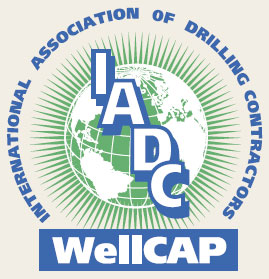 |
Fig. 1. WellCAP was implemented in 1995 for use in unregulated areas but gained widespread use in the US, with revised MMS training regulations in 2002.
|
|
BACKGROUND
WellCAP was the first industry-developed training standard and training provider accreditation program for drilling well control. When implemented in the mid-1990s, it broke new ground with a core curriculum for well control training, as well as procedures and criteria for evaluating multiple facets of a training provider’s operations—from facilities and equipment to testing practices and instructor qualifications. It also introduced a new role for IADC, as a group charged with monitoring and auditing training provider performance.
API has also acknowledged the value of IADC’s accreditation programs by referencing both WellCAP and its companion program, RIG PASS, in some of its Recommended Practices (RPs). This includes the recently revised RP 64, “Recommended Practice for Diverter Systems, Equipment and Operations,” and RP 59, “Recommended Practice for Well Control,” undergoing revision.
MANPOWER CONCERNS
Many people have drawn a correlation with the steep ramp-up that the industry faced in the late 1970s and early 1980s. Indeed, many parallels exist—a large number of newbuild rigs set to hit a market already operating at the highest levels in more than 20 years, coupled with the challenging task of ensuring that rigs, both old and new, are staffed with trained, competent employees.
Claus Chur, President/CEO of KCA DEUTAG and 2006 IADC Chairman, predicts that industry growth will put even more importance on the availability of rig personnel, and on training them and ensuring their competence.
Future demand estimates. Mr. Chur predicts that the industry will need to absorb more than 500 new land and offshore rigs worldwide within the next two years, Fig. 2. An estimated 30,000 trained workers must be added to the existing rig workforce to operate these units. Of that number, about 120 will be offshore rigs, alone, requiring an estimated 12,000 employees. Compounding this situation, an estimated 50% of the total workforce in the industry will retire over the next 10 years.
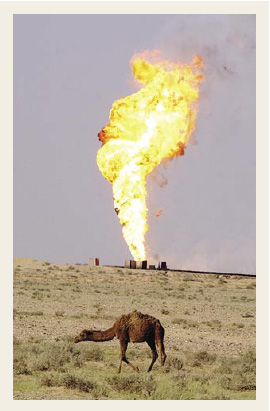 |
Fig. 2. IADC wants to make sure that scenes like this blowout, just over the horizon in Iraq, are prevented, as 500 new land and marine rigs enter the industry within the next two years.
|
|
While there is great demand for most rig-related positions, those of toolpusher, nightpusher and driller are critical, as these functions typically need two to three years of rig site experience to attain an average proficiency. In the current drilling climate, however, many companies are under pressure to advance rig personnel quickly. “Compressing time to competency” has become the goal of many organizations faced with this challenge
Exacerbating the problem is an increase in personnel turnover, driven by restricted resources and rising pay packages. “Poaching,” the practice of hiring employees from competitors and suppliers, has become commonplace. Within the industry hierarchy, operators attract talented drilling contractor personnel; offshore operations attract personnel with experience on offshore rigs. To counter this trend, contractors are mounting intense recruiting efforts, including programs targeted at foreign nationals. A growing trend is the employment of “Eastern expats” from Eastern European countries.
STRAINED INFRASTRUCTURE
Training organizations are also feeling the pinch of increased activity. They are under growing pressure to provide skilled trainers, training programs and training facilities. This has increased IADC’s responsibilities to monitor training providers, to ensure that they comply with program requirements. To satisfy this need, IADC has stepped up auditing efforts for all accreditation programs, but with a special emphasis on WellCAP providers.
During the past year, IADC has conducted more than 25 provider audits. Most of these have taken place in Texas and Louisiana—areas with the highest concentrations of providers—but others have taken place in California, New Mexico and Utah in the US, as well as in Brazil, Canada, China and the UK.
Increased audits planned. The association hopes to double that amount in 2007, aided by the recruitment of additional audit resources in the US, Europe, Asia and Latin America. This is due to the need to not only monitor the rapidly expanding operations of existing training providers, but also a growing number of new providers that have sprung up to meet swelling industry needs.
Demonstrating the importance that IADC places on quality, the association’s Accreditation & Certification Department obtained its own ISO 9001:2000 certification from Det Norske Veritas (DNV) in 2006 for its quality management system.
WellCAP CURRICULUM
While the number of levels of instruction and types of curriculum available to WellCAP providers may be daunting to people outside the industry, the system is designed to allow both commercial providers and in-house training departments the ability to tailor their training to best meet the needs of their customers or organizations, Fig. 3.
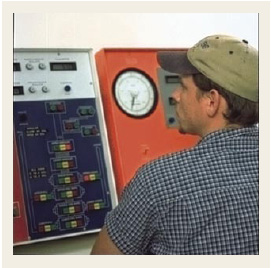 |
Fig. 3. WellCAP includes instruction in well control principles, practices and equipment designed for employees from floorhands to drilling managers. Photo courtesy of Transocean.
|
|
The Introductory Level of WellCAP is recommended for derrick men and floorhands. The candidate must pass a basic course in well control principles, practices and equipment. The certification is for five years. This option allows training providers a high degree of flexibility in delivering the instruction. Simulator exercises are optional at this level. Contractors who choose to deliver this level of training at the rig site may be accredited to do so.
The Fundamental Level is recommended for drillers and assistant drillers. The certification is provided in two options, surface or subsea stack, and is valid for two years. The fundamental level requires simulator exercises and testing to show proficiency at kick detection and shut-in, the ability to record standpipe pressure at slow pump rate, and the ability to read, record and report drill pipe and annulus pressures.
The Supervisory Level is designed for the representative on the rig (company man), mud engineer, rig superintendent and toolpusher. The certification is granted, when an individual successfully completes a course in well control principles, practices and equipment. This carries the same requirements, validity and options as those at the fundamental level. Simulator exercises to be provided at this level include demonstration of bringing pump on and off-line and changing pump speed using choke; determining correct initial circulating pressure; and maintaining constant bottomhole circulating pressure, Fig. 4. Subsea instruction must also include exercises to show the ability to adjust circulating pressures to compensate for choke line friction, and the ability to adjust choke to compensate for rapid change in hydrostatic pressure.
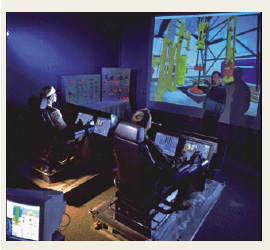 |
Fig. 4. Simulator exercises are required at the Fundamental and Supervisory Levels of WellCAP. Photo courtesy of Transocean.
|
|
At the most advanced level, WellCAP Plus provides an alternative to the standard supervisory level for experienced rig and drilling management personnel. Instead of a traditional classroom environment, participants experience a facilitated learning process that focuses on team problem-solving and decision-making skills. The course can be delivered only by trainers who have taken a special IADC-approved Facilitator Certification course, which to now has been supplied by the Texas Engineering Extension Service (TEEX) group of Texas A&M University.
ADVANCEMENTS IN TRAINING
WellCAP’s curriculum offerings have evolved steadily since the program was first implemented in 1995 to keep apace of industry needs. The program was originally released with only a core curriculum for drilling, although workover and completion were added in 1997. Basic well servicing was addressed with the development of curriculum for coiled tubing, snubbing and wireline operations in 2001. Also that year, IADC developed the industry’s only well control curriculum for underbalanced operations.
The drilling curriculum underwent revisions in 2002, when deepwater topics were added to subsea instruction. Further revisions occurred in 2004 to address bridging documents, diverter operations and shallow gas. WellCAP Plus was implemented in 2005. The coiled tubing curriculum was revised in 2005 and again in 2006, with special emphasis on a special stand-alone course for coiled tubing operator personnel. Consideration will be given in early 2007 to revising the snubbing curriculum.
More than 80 training providers are accredited by IADC, with nearly 250,000 WellCAP certificates issued since the program started. WellCAP instruction is given in English, Spanish, French, Portuguese, Chinese, Japanese, Hungarian, Russian and Bahasa Indonesian.
BLOWOUT RATES/FACTORS
Preliminary statistics provided by the US Minerals Management Service (MMS), which governs production activities on the US Outer Continental Shelf (OCS), show a total of 42 well blowouts that occurred between 1992 and 2005. Exploratory wells encountered the highest rate of blowouts (0.36%), although these wells encompassed only 37% of total wells drilled. Development wells, which accounted for 63% of the 14,314 wells drilled in the period, had a blowout rate of 0.25%. That amounts to one blowout per every 277 exploratory wells drilled, and one per every 394 development wells (total for all was one blowout per every 341 wells).
Primary factors contributing to blowouts noted by MMS were cementing and equipment failure. Other frequently occurring factors were stuck pipe, casing failure and swabbing. Formation fracture contributed to additional blowouts.
The overwhelming majority of OCS blowouts were controlled by pumping mud or cement, or by operating mechanical well control equipment. A significant number ceased flow, because uncased portions of the wells bridged over, while trapped gas that dissipated quelled the remainder. MMS plans to publish detailed statistics regarding these events in the next few months.
Overall, MMS has said that industry has done an admirable job in preventing blowouts and other well control incidents. For instance, the frequency and severity of blowouts during the agency’s 1992-2005 study period decreased from the 1971-1991 period, with a notable reduction in shallow gas blowouts.
Unsolved issues. Areas that remain of concern to MMS include gas migration during cementing, unplanned riser disconnects, and HPHT wells. Deepwater HPHT wells and the design of HPHT equipment for use with sour gas are subjects of continuing MMS research, as are risk assessment of surface versus subsurface BOP usage on MODUs; dual gradient technology; operating above rated working pressure of BOPs and wellheads; and managed pressure drilling.
FIELD COMPETENCY
However, both government and the industry intend to keep a close eye on how operators and contractors manage the current boom times. To assist in this, IADC has been asked to assist MMS in developing hands-on testing parameters and procedures to measure retention of training among rig employees.
The request was made by Bud Danenberger, chief of the MMS Engineering and Technical Division. The initiative arose as the result of a breakout discussion that occurred during the recent WellCTRL Gulf of Mexico Conference sponsored by Texas A&M University.
While MMS regulations have long provided the agency the ability to perform hands-on testing, as well as rig site testing, these measures have seen little use, due to uncertainty over how to do so effectively. Mr. Danenberger suggested that IADC is best suited to assist MMS to identify practical items that can be used as indicators of field well control competency. IADC agreed to place the issue on the agenda for the next meeting of its Well Control Committee, which will take place Jan. 24 at Chevron’s Briarpark Training Center in Houston.
MMS/IADC RELATIONSHIP
The interaction between IADC and MMS is symbolic of the long-time cooperation between the two organizations, with the common goal of ensuring safety of drilling operations. MMS has strongly supported IADC’s efforts in the past, including development of the IADC Deepwater Well Control Guidelines and its later supplement that addresses unplanned riser disconnects. This relationship was cemented in the 2000-2002 period, when MMS underwent a significant change regulating the training required for OCS operations.
In August 2000, MMS published its long-awaited, final Subpart O rule regarding training of workers on the OCS. As had been expected, the rule did away with the agency’s traditional prescriptive regulations in favor of a performance-based system. Under the new rules, MMS discontinued its previous practice of approving well control training schools in the US. Instead, it made OCS lessees responsible for developing their own training plans, and for ensuring that their employees and their contractors’ employees are adequately trained.
In the final rule published in the Federal Register, MMS wrote, “MMS commends IADC for the WellCAP program and acknowledges the value WellCAP could bring in providing minimum well control training requirements to lessees and contractors worldwide.”
While originally designed for areas outside the US and Europe, where well control standards or regulation might be minimal or non-existent, this new approach provided an unprecedented opportunity for WellCAP to become the US industry benchmark. By the time the final Subpart O rule went into effect in October 2002, members of the Operators Offshore Committee (the producer group representing active operators in the GOM) had overwhelmingly accepted WellCAP. Today, WellCAP is specified in the training plan of nearly every operator, drilling contractor and service company active on the OCS.
PETROBRAS’ EXPERIENCE
One company that believes it has reaped benefits from WellCAP’s “well control from Day One” philosophy is Petrobras. Ten years ago, Petrobras was the first operator to achieve accreditation in WellCAP. It also became the first WellCAP training provider in the region. Since then, the company’s cumulative blowout rate per 1,000 wells drilled has dropped from nearly 3.25 to 0.5, an 85% improvement. In fact, Petrobras has experienced only two minor blowouts in drilling operations.
“We’re very proud of the achievement, and the results of the WellCAP program in reducing the number of blowouts are evident,” said Otto Santos, coordinator of the Well Construction Training Program at Petrobras University. The facility operates under full IADC accreditation for surface stack and surface/subsea instruction for drilling. Courses are provided in Portuguese at eight facilities in Brazil.
“Well control training was instrumental in reducing the number of blowouts in Brazil and the rate of blowouts per 1,000 drilled wells,” Dr Santos said. He noted that this reduction also results from preventive actions taken by Petrobras, such as well safety inspections, well control equipment tests, elaboration of well safety procedures and regulations, and research and development. Petrobras marked the 10th anniversary of its WellCAP accreditation with a celebration at its headquarters in July 2006.
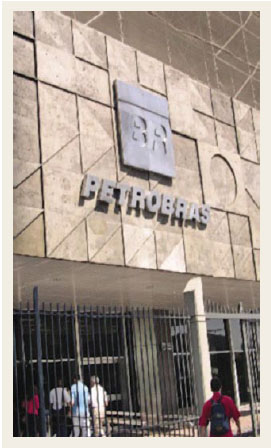 |
Fig. 5. Petrobras has participated in WellCAP for 10 years. Photo courtesy of Petrobras.
|
|
During the years 1979 to 1992, Petrobras provided well control training to only 706 people. In 1993, the company established its own certification system, drastically increasing the number of workers trained per year. From January 1993 to July 1996, 770 Petrobras well control certificates were issued.
Then, in July 1996, Petrobras adopted IADC’s WellCAP as its well control certification system. In the 10 years following, it issued 4,026 WellCAP certificates, with more than 1,800 of those at the supervisory level.
Currently, Petrobras has seven instructors for well control principles/practices and four instructors for well control equipment. Four instructors also provide lectures on well control in workover operations, held nationwide in Brazil using five well control simulators.
According to Dr Santos, Petrobras University has worked on implementing several new projects in 2006 to further improve its training. First, it plans to achieve WellCAP accreditation in the workover category, which would include no less than 32 hr of instruction. Second, it will implement software to allow all Petrobras managers to easily access well control training information, such as certificate status and training statistics.
Third, it will put into its well control classes, software to provide students with a kick simulator, a calculator of well control functions and kill sheets. This proprietary software was jointly developed by Petrobras and the State University of Campinas (Unicamp).
PROVIDER STANDARDS/OVERSIGHT
In addition to Petrobras, WellCAP has become the internal standard worldwide for other operators, such as Chevron and PEMEX, and drilling contractors like Diamond Offshore, Transocean and Nabors International. It calls for training providers to clearly identify the goal, curriculum and methodology that will be used in their particular well control training programs for specific student levels. To facilitate this, WellCAP identifies concepts and skills elementary to well control instruction.
Maximum class size approved for each provider depends on the number of well control simulators, the number of participants per simulator group, number of instructors, classroom space, course length, course content, and amount of time allocated to manage simulator.
The program must demonstrate effective utilization of each component to ensure that students have optimum conditions for learning required skills. Eighteen students is generally the maximum that may attend any one course. This may be reduced, depending on resources available.
WellCAP requires a minimum of 20 hr of course presentation for a drilling surface stack course. An additional five hours should be included for a combined surface and subsea stack course (a total of 25 hr). Regardless of the curriculum type, a maximum of nine hours of instruction (total instruction, including practical exercises) per day may not be exceeded. Under WellCAP’s modular approach, additional types of instruction can be added to form combination courses tailored for specific needs.
WellCAP was developed with an expectation toward a high practical standard of testing the well control curriculum with regard to measuring proficiency in identified job skills. At least 50% of the identified job skills must be specifically included in the curriculum testing process. A student must score a minimum of 70% (on each of the written and simulator tests) to successfully pass a course. Samples of the exams or tests that will be given to students must be approved by IADC. Exams must be rewritten at least once every two years.
Accreditation of providers. The accreditation system is administered through the oversight of IADC staff, a team of highly qualified contract auditors, and a five-person panel responsible for all key decisions regarding approval of providers, courses, and instructors. Members of the panel are volunteers representing the well control and training groups of operators, contractors and university faculty. The panel is nominated by the IADC Well Control Committee and approved by the IADC Executive Committee to serve three-year terms.
Once a school has gained accreditation, it is valid for seven years, provided the school follows annual renewal and reporting procedures. The application process requires that the school do a detailed self-review of its curriculum and operations, as compared to WellCAP curriculum and accreditation criteria.
A school is required to submit samples of its instructional materials and demonstrate its compliance with IADC criteria regarding equipment, class size, course duration, instructor experience and qualifications, student testing and recordkeeping.
A site visit is required for a school to obtain full accreditation, even though conditional accreditation may be awarded for a brief period before a site visit. Every school receives a site visit at least once during its seven-year accreditation. Site visits may also occur in response to complaints against a school.
THE AUTHOR
|
 |
Steve Kropla is vice president of Accreditation and Certification with the International Association of Drilling Contractors. He joined IADC in 1992 after more than 10 years of experience in the drilling industry, in Alaska and the Lower 48 US states. His duties in that earlier period included health and safety, training and responsibility for a broad range of human resources issues. He holds a BS degree in journalism from Southern Illinois University and an MS degree in Human Resources Management & Development from Chapman University in Orange, California. Mr. Kropla is a Certified Senior Professional in human resources. At IADC, he is responsible for managing the association’s worldwide accreditation activities, and he also coordinates the activities of several IADC committees.
|
|
|
|
|








